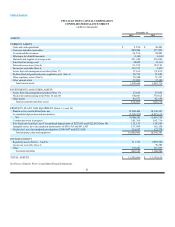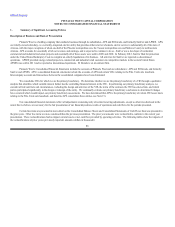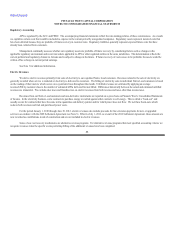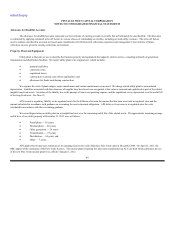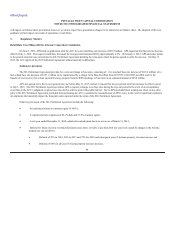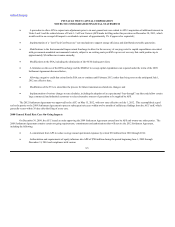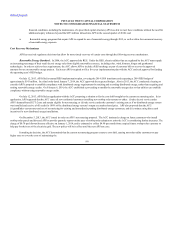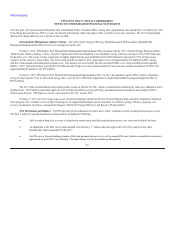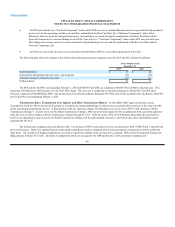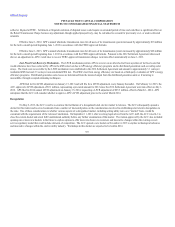APS 2013 Annual Report Download - page 94
Download and view the complete annual report
Please find page 94 of the 2013 APS annual report below. You can navigate through the pages in the report by either clicking on the pages listed below, or by using the keyword search tool below to find specific information within the annual report.
Table of Contents
PINNACLE WEST CAPITAL CORPORATION
NOTES TO CONSOLIDATED FINANCIAL STATEMENTS
Pursuant to an ACC order, we defer operating costs related to APS’s acquisition of additional interests in Units 4 and 5 and the related closure of
Units 1-3 of Four Corners. See Note 3 for further discussion. These costs are deferred on the depreciation line of the Consolidated Statements of Income.
For the years 2011 through 2013, the depreciation rates ranged from a low of 0.45% to a high of 12.08%. The weighted-average rate was 3.00% for
2013, 2.71% for 2012, and 2.98% for 2011.
Allowance for Funds Used During Construction
AFUDC represents the approximate net composite interest cost of borrowed funds and an allowed return on the equity funds used for construction of
regulated utility plant. Both the debt and equity components of AFUDC are non-cash amounts within the Consolidated Statement of Income. Plant
construction costs, including AFUDC, are recovered in authorized rates through depreciation when completed projects are placed into commercial operation.
AFUDC was calculated by using a composite rate of 8.56% for 2013, 8.60% for 2012, and 10.25% for 2011. APS compounds AFUDC semi-
annually and ceases to accrue AFUDC when construction work is completed and the property is placed in service.
Materials and Supplies
APS values materials, supplies and fossil fuel inventory using a weighted-average cost method. APS materials, supplies and fossil fuel inventories
are carried at the lower of weighted-average cost or market, unless evidence indicates that the weighted-average cost (even if in excess of market) will be
recovered.
Fair Value Measurements
We account for derivative instruments, investments held in our nuclear decommissioning trust, certain cash equivalents and plan assets held in our
retirement and other benefit plans at fair value on a recurring basis. Due to the short-term nature of net accounts receivable, accounts payable, and short-term
borrowings, the carrying values of these instruments approximate fair value. Fair value measurements may also be applied on a nonrecurring basis to other
assets and liabilities in certain circumstances such as impairments. We also disclose fair value information for our long-term debt, which is carried at
amortized cost (see Note 6).
Fair value is the price that would be received for an asset or paid to transfer a liability (exit price) in the principal or most advantageous market which
we can access for the asset or liability in an orderly transaction between willing market participants on the measurement date. Inputs to fair value may include
observable and unobservable data. We maximize the use of observable inputs and minimize the use of unobservable inputs when measuring fair value.
We determine fair market value using observable inputs such as actively-quoted prices for identical instruments when available. When actively
quoted prices are not available for the identical instruments, we use other observable inputs, such as prices for similar instruments, other corroborative market
information, or prices provided by other external sources. For options, long-term contracts and other contracts for which observable price data are not
available, we use models and other valuation methods, which may incorporate unobservable inputs to determine fair market value.
90



